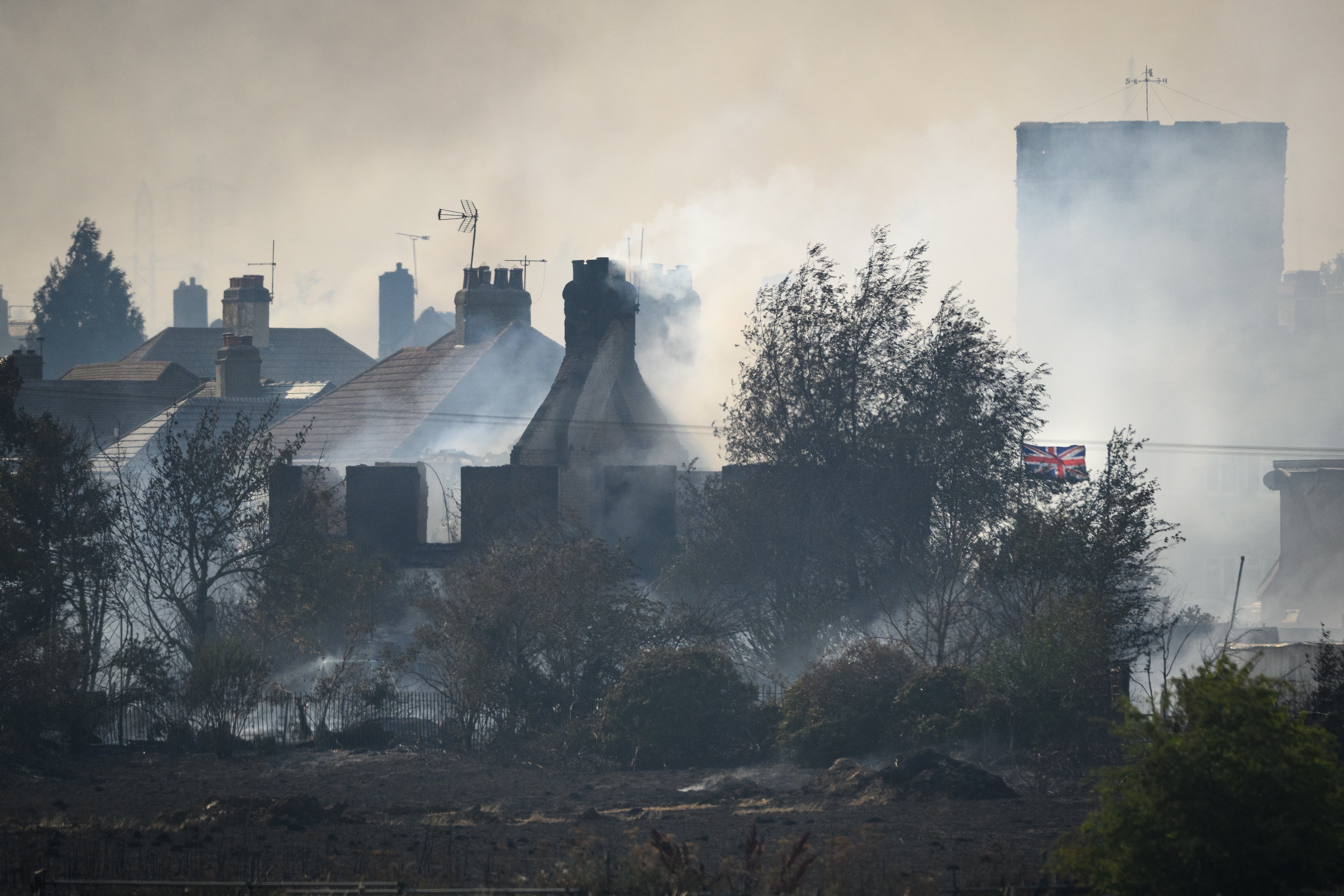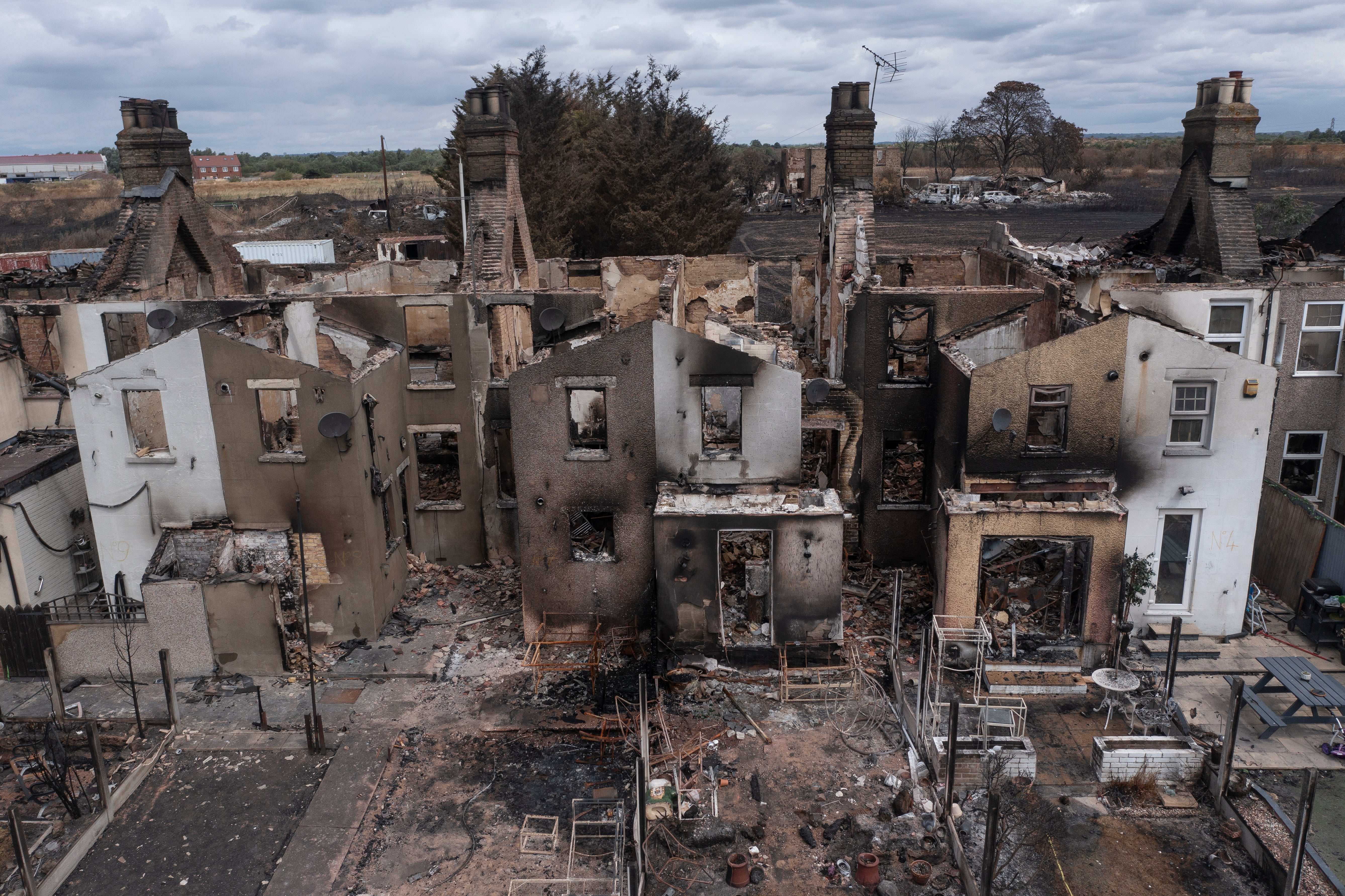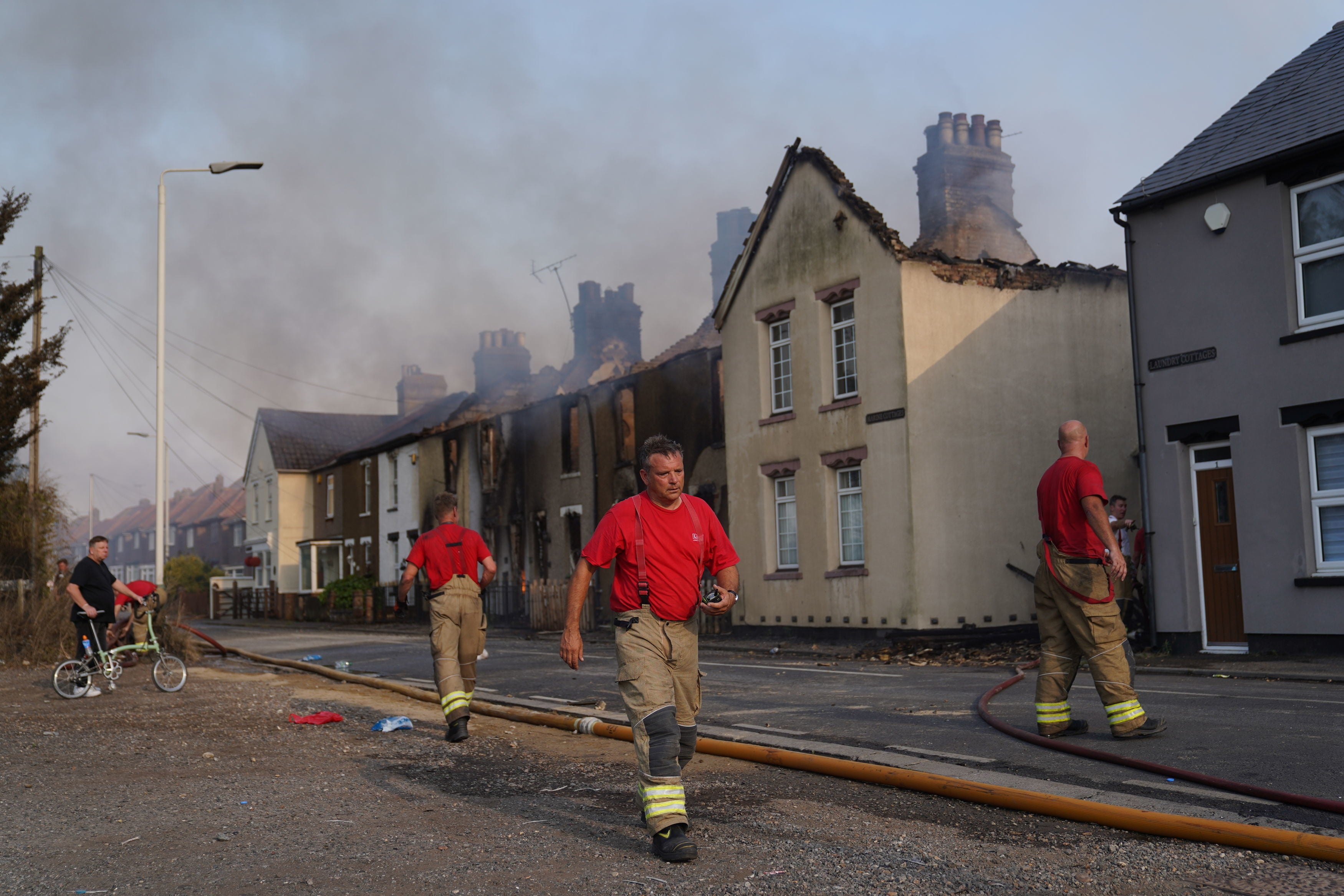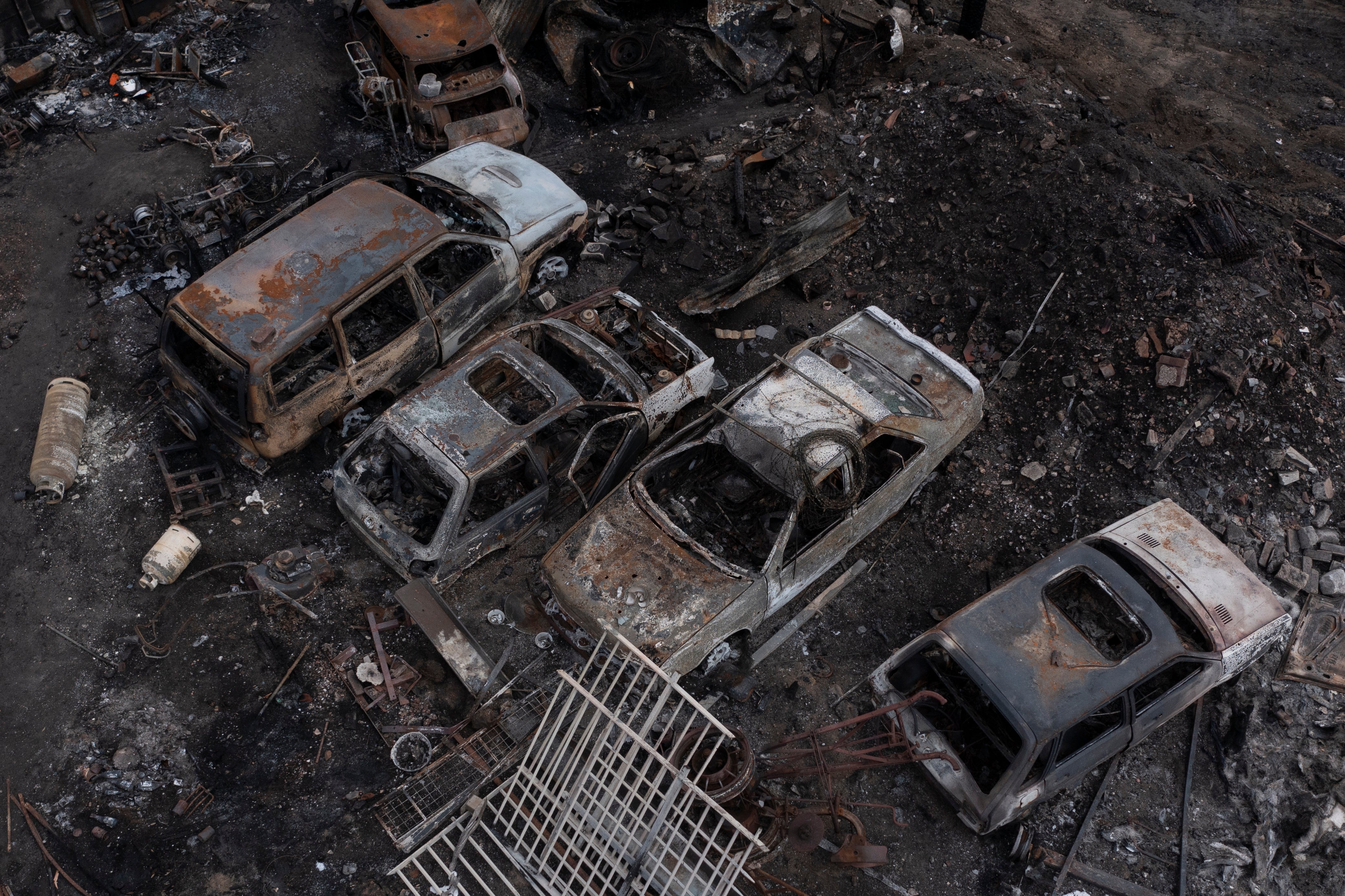Levels of dangerous air pollution surged as London fires raged amid record-breaking heat
Grass fires raged across the greater London area on Tuesday 19 July, as the UK topped 40C for the first time on record

Your support helps us to tell the story
From reproductive rights to climate change to Big Tech, The Independent is on the ground when the story is developing. Whether it's investigating the financials of Elon Musk's pro-Trump PAC or producing our latest documentary, 'The A Word', which shines a light on the American women fighting for reproductive rights, we know how important it is to parse out the facts from the messaging.
At such a critical moment in US history, we need reporters on the ground. Your donation allows us to keep sending journalists to speak to both sides of the story.
The Independent is trusted by Americans across the entire political spectrum. And unlike many other quality news outlets, we choose not to lock Americans out of our reporting and analysis with paywalls. We believe quality journalism should be available to everyone, paid for by those who can afford it.
Your support makes all the difference.Dangerous air pollution surged in the wake of fires in the greater London area during the heatwave last week, soaring well above United Nations recommended limits and potentially putting hundreds of thousands of people suffering from asthma at risk.
An air quality monitoring sensor not far from the Wennington fire in Essex in which nearly 20 houses were partially or completely destroyed on Tuesday 19 July recorded a peak of nearly 100 micrograms per cubic metre (µg/m3) of tiny particulate matter smaller than 2.5 microns in size (PM 2.5) at 3 pm that day.
PM2.5 is considered to be the most dangerous form of air pollution to human health, and last year the World Health Organization (WHO) published new guidelines with more stringent recommended limits due to its health threats.

The peak level recorded near the Wennington fire on Tuesday was more than six times the WHO’s recommended 24-hourly average concentration of PM2.5 which is set at 15 μg/m3. While Asthma+Lung UK said hundreds of thousands of people living with asthma in London risk being triggered by toxic air.
Particulate matter, also known as particle pollution, is the main component of wildfire smoke and the principal public health threat of wildfire pollution. It is also a by-product of domestic and industrial wood burning and road traffic. The UK annual average at urban background sites in 2021 was around 7.9 µg/m3, while the annual average roadside concentrations were around 8.3 µg/m3.
In 2019, the average annual concentration of PM2.5 in London was 10.8 µg m-3, above the WHO’s newly recommended annual concentration limit of 5 µg m-3.
Naked to the eye PM2.5 is small enough to pass through the lungs into the bloodstream and into your organs.
Exposure to these particles can cause asthma, lung cancer, strokes and heart disease, according to the Taskforce for Lung Health, a collaboration of patients, carers and health care professionals who aim to improve lung health. The taskforce says there is also evidence that links PM2.5 to low birth weight, diabetes, and diseases such as Alzheimer’s and Parkinson’s.

Major fires - mainly grass blazes - raged in the greater London area on Tuesday 19 July, as the UK topped 40C for the first time on record and firefighters said the extreme heat had led to tinder dry conditions across England. The London Fire Brigade recorded its busiest day since World War II.
Marina Romanello, director of the Lancet Countdown, which tracks and works to advance progress on health and climate change, said the concentration of particulate matter recorded near the Wennington fire on Tuesday was “extremely high” and likely to have led to hospitalisations of people who already suffer from respiratory conditions, like asthma.
"That would have given you acute hospitalizations for sure," she said.

Dr Romanello said prolonged exposure to PM2.5 is particularly dangerous for children whose lungs are developing, but can also cause pulmonary, cardiovascular and neurological disorders in adults. Several of the monitoring sensors operated by the Breathe London network are located in schools across the capital.
“There is no safe level of PM2.5,” said Dr Romanello. “It is particularly dangerous for those with underlying respiratory conditions, including those with asthma, people living with COPD and other respiratory conditions.”
“The acute exposure during these events is really high,” she added, referring to wildfires.
The following is a list of some of the major fires recorded in London on 19 July, and the peak concetratons of PM2.5 recorded by nearby air quality monitoring sensors operated by Breathe London that day. All are well above the WHO’s recommended 24-hourly average concentration of PM2.5 of 15 μg/m, although it should be noted they are peak recordings and not daily averages.
Fire in Pea Lane Upminster:
Monitoring site: Scotts Primary School
Particulate Matter - 49.05 µg/m3 - 19 July 17:00
Fire in Wennington
Monitoring site: Rainham
Particulate Matter - 99.96 µg/m3 - 19 July 15:00
Fire on the Uxbridge Road in Pinner
Monitoring site: St Jerome Bilingual School, Station Road
Particulate Matter - 31.69 µg/m3 - 19 July 23:00
Fire on Green Lanes in Southgate
Monitoring site: North Middlesex University Hospital
Particulate Matter - 29.85 µg/m3 - 19 July 23:00
Fire on Oaks Road in Croydon
Monitoring site: Mint Walk
Particulate Matter - 34.74 µg/m3 - 19 July 23:00;
59.25 µg/m3 - 21 July 8:00
Fire on Ballards Road in Dagenham
Monitoring site: Heathway - Station Parade
Particulate Matter - 34.35 µg/m3 - 19 July 19:00
Fire on Sunningfields Crescent in Hendon
Monitoring site: The Orion Primary School
Particulate Matter - 34.94 µg/m3 - 19 July 23:00
Monitoring site: Wessex Gardens Primary School
Particulate Matter - 35.73 µg/m3 - 19 July 23:00
Fire in Chapel View in Croydon
Monitoring site: Napier Road
Particulate Matter - 36.15 µg/m3 - 19 July 2022
Join our commenting forum
Join thought-provoking conversations, follow other Independent readers and see their replies
Comments